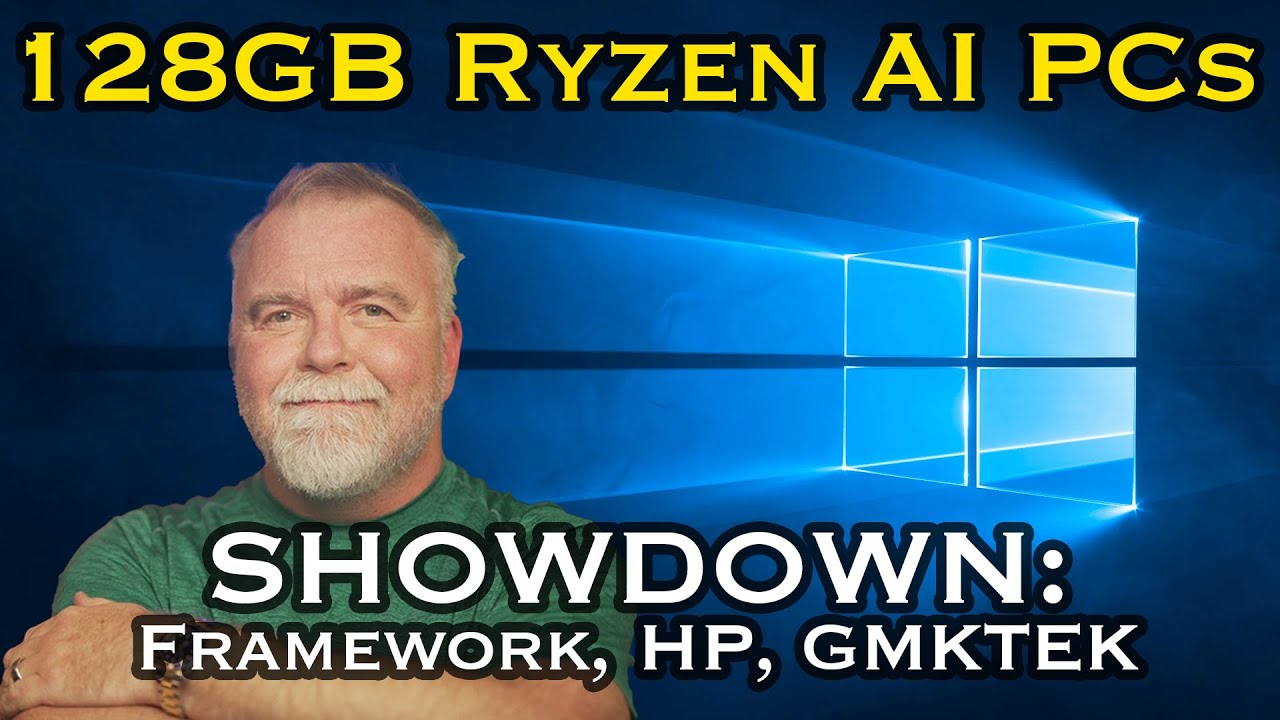Dave compares three 128GB mini PCs powered by the AMD Ryzen AI Max Plus 395, highlighting the HP Z2 Mini G1A’s enterprise-grade security and compact design, the GMK Tech Evo X2’s balanced performance and connectivity at a budget-friendly price, and the Framework Desktop’s superior cooling and modularity for sustained high performance. Each system excels in different areas—HP in security and short bursts, GMK in GPU performance and versatility, and Framework in thermal management and upgradability—catering to varied user priorities.
In this detailed comparison, Dave explores three mini PC configurations powered by AMD’s latest Ryzen AI Max Plus 395 processor: the HP Z2 Mini G1A, the GMK Tech Evo X2, and the Framework Desktop. Each system is equipped with 128GB of RAM and showcases different design philosophies and target audiences. The Ryzen AI Max Plus 395 is a powerful APU featuring 16 cores, 32 threads, and integrated Radeon 8060S graphics, built on TSMC’s advanced 4nm process. It supports high clock speeds, robust cache, and AI acceleration through its XDNA2 NPU, making it suitable for demanding AI and compute workloads without needing a discrete GPU.
The HP Z2 Mini G1A is positioned as a professional-grade workstation with enterprise-level security features such as full memory encryption, secure virtualization, and TPM 2.0. Its build quality is premium, with MIL-STD certification for durability, and it offers excellent storage options and connectivity including Thunderbolt 4 and optional Wi-Fi 7. However, its compact vapor chamber cooling system leads to thermal throttling under sustained loads, capping performance to maintain acoustic comfort and reliability, which may limit its appeal for power users needing consistent high performance.
The GMK Tech Evo X2 targets budget-conscious enthusiasts seeking a balance of performance and connectivity. It uses the standard Ryzen AI Max Plus 395 without Pro features, resulting in a lower price point. Its cooling system is more robust than HP’s, with multiple fans and copper heat pipes allowing sustained higher power and better thermal management. The Evo X2 also offers extensive connectivity options including USB 4, HDMI 2.1, Wi-Fi 7, and 2.5 Gb Ethernet, making it versatile for gaming, virtualization, and media tasks. Its performance is strong in both AI inference and GPU benchmarks, positioning it as a solid all-rounder.
The Framework Desktop stands out for its exceptional cooling and modular design, aimed at users who prioritize sustained performance and upgradability. Its large heatsink and advanced thermal materials keep temperatures significantly lower under load, enabling consistent high clock speeds and overclocking potential. While its aesthetic and build quality have minor flaws, its repairable and customizable nature appeals to enthusiasts and professionals who want a future-proof system. It supports dual M.2 storage and customizable ports, making it ideal for demanding creative and AI workloads.
Benchmark tests reveal nuanced differences: HP excels in short burst multi-core rendering due to optimized firmware, GMK leads in GPU performance and balanced cooling, while Framework dominates sustained multi-core workloads thanks to superior thermal management. Noise levels and power efficiency vary, with Framework being the quietest under load. Ultimately, the choice depends on user priorities—HP for security and enterprise reliability, GMK for cost-effective versatility, and Framework for thermal endurance and modularity. Dave concludes that while all three are close in specs and performance, their distinct design choices cater to different Windows user needs.
